Introduction to the Constitution of India & Preamble | Legal Reasoning for CLAT PDF Download
What is the Constitution of India?
The Constitution of India is the supreme law of the land and the cornerstone of the country’s democracy. It is a unique and detailed document that combines ideas from various global constitutions while reflecting India’s rich diversity and values.
Adopted on November 26, 1949, and enforced from January 26, 1950, the Constitution establishes the framework for governance, fundamental rights, and duties of citizens.
Originally, it was the longest written constitution in the world, consisting of 395 Articles, 22 Parts, and 8 Schedules. Today, following the 105th Amendment in 2021, the Constitution contains 448 Articles, 25 Parts, and 12 Schedules, continuing to guide India’s democracy and development.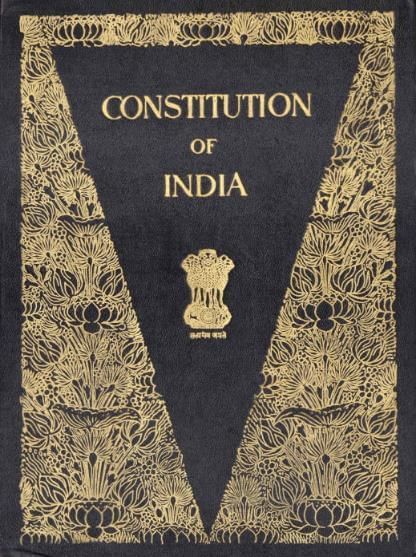
Historical Background
Constituent Assembly
- The Constituent Assembly was established in December 1946 as part of the Cabinet Mission Plan.
- Initially comprising 389 members, its number was reduced to 299 following the partition of India.
- The Assembly held its first meeting on December 9, 1946, with Dr. Sachchidanand Sinha serving as the temporary Chairman and Dr. Rajendra Prasad later elected as its President.
- The Drafting Committee, crucial for formulating the Constitution, was set up on August 29, 1947. It was headed by Dr. B.R. Ambedkar, who is revered as the chief architect of the Indian Constitution.
Key Figures Involved in Drafting the Indian Constitution
- Dr. B.R. Ambedkar was the Chairman of the Drafting Committee responsible for creating the main provisions of the Constitution.
- Jawaharlal Nehru played a crucial role by introducing the Objectives Resolution, which laid the foundation for the Preamble of the Constitution.
- Sardar Vallabhbhai Patel oversaw committees that focused on provincial constitutions and the integration of princely states into the Indian Union.
- Other important figures in the drafting process included B.N. Rau, the Chief Drafting Officer of the Constitution, as well as K.M. Munshi and Alladi Krishnaswamy Ayyar.
Timeline of Adoption and Enforcement
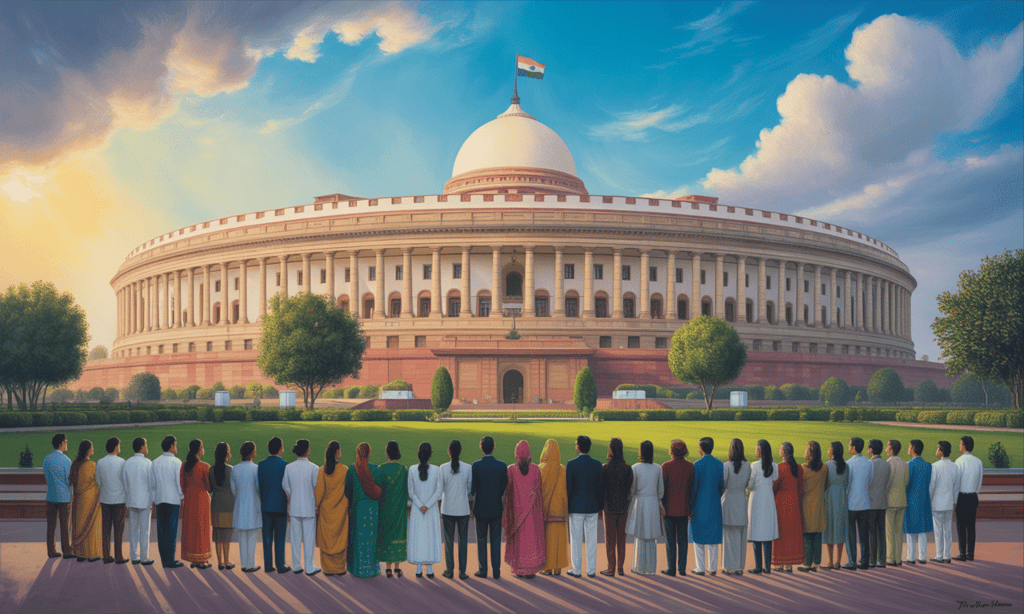
Adopted: November 26, 1949 (Constitution Day).
Enforced: January 26, 1950 (Republic Day).
Influences on the Indian Constitution
The Constitution of India is shaped by various sources, including:
- Government of India Act, 1935: This act laid the groundwork for a federal structure in India and included provisions for handling emergencies.
- U.S. Constitution: The Indian Constitution borrows the concept of Fundamental Rights and the idea of judicial review from the U.S. Constitution.
- British Constitution: India adopted a parliamentary system and the rule of law from the British Constitution.
- Irish Constitution: The Directive Principles of State Policy (DPSP) in the Indian Constitution are influenced by the Irish Constitution.
- Canadian Constitution: The Canadian Constitution’s model of federalism with a strong central union has influenced the Indian Constitution.
- Australian Constitution: The inclusion of a concurrent list of powers in the Australian Constitution is reflected in the Indian Constitution.
- German (Weimar) Constitution: Provisions for emergencies in the Indian Constitution are influenced by the German Constitution.
Salient Features of the Indian Constitution
World's Longest Written Constitution – Originally had 395 Articles, 22 Parts, and 8 Schedules (now increased to 12 Schedules). It combines the governance framework of both federal and unitary systems and incorporates diverse legal traditions.
Federal with Unitary Bias – The Constitution embodies a quasi-federal structure, blending federalism with a strong unitary tilt.
• Federal: Powers are divided among the Union, State, and Concurrent Lists as per the Seventh Schedule. This maintains a balance between central authority and regional autonomy.
• Unitary: Features like single citizenship, a strong central Union government, and emergency powers help ensure national unity during crises.Parliamentary Democracy – Follows the Westminster model with executive accountability to the legislature.
• Executive: The President is the ceremonial head, while the Prime Minister is the real executive. The Prime Minister and Council of Ministers are responsible to the Lok Sabha.
• Legislature: Bicameral Parliament comprising the Lok Sabha and Rajya Sabha ensures representation of both the people and the states.Fundamental Rights (Articles 12–35) – These guarantee liberty, equality, and justice.
• Six Rights: Include Equality, Freedom, Protection from Exploitation, Religion, Cultural and Educational Rights, and Constitutional Remedies. These form the core of civil liberties.
• Justiciable: These rights are enforceable in courts, and citizens can approach the judiciary if they are violated.Directive Principles of State Policy (DPSP) (Articles 36–51) – Aim to establish economic and social democracy.
• Non-justiciable Guidelines: Include provisions like free education and equitable wealth distribution. These guide policymaking and promote social justice.Fundamental Duties (Article 51A) – Promote responsible citizenship and respect for national values.
• Introduction: Added by the 42nd Amendment in 1976, based on recommendations of the Swaran Singh Committee.
• Number of Duties: There are 11 duties, including respect for the Constitution and protection of the environment, which act as a moral code for citizens.Independent Judiciary – Ensures constitutional supremacy and a system of checks and balances.
• Supreme Court (Article 124): Acts as the final interpreter of the Constitution.
• High Courts (Article 214): Ensure justice is served at the state level.
• Judicial Review: Grants courts the power to examine laws and executive actions, preventing violation of constitutional principles.Secularism – The state maintains neutrality in religious matters and ensures freedom of belief and worship. This positive secularism upholds equal respect for all religions.
Socialism – Focuses on reducing income and social disparities. It promotes equitable distribution of resources and social welfare policies.
Universal Adult Suffrage (Article 326) – All citizens above the age of 18 can vote regardless of caste, creed, gender, or education. This strengthens political equality and democratic participation.
Amendability – The Constitution is neither too rigid nor too flexible.
• Article 368: Provides for amendment through simple majority, special majority, or state ratification, depending on the type of change. This enables constitutional evolution.
• Basic Structure Doctrine: Established in Kesavananda Bharati (1973), it limits Parliament from altering the core features like democracy, secularism, and federalism, thus preserving constitutional identity.Emergency Provisions – Equip the Centre to handle extraordinary situations effectively.
• National Emergency (Article 352): Can be declared during war, external aggression, or armed rebellion, altering the federal structure and suspending certain fundamental rights.
• State Emergency (Article 356): Declared when there is a constitutional breakdown in a state, commonly referred to as President’s Rule.
• Financial Emergency (Article 360): Imposed in cases of financial instability, allowing the Centre to regulate states' financial matters.
Structure of the Constitution
- Parts: 22 (originally), covering Union, States, Rights, etc.
- Schedules: 12 (e.g., First: States/UTs; Eighth: Languages).
- Articles: Over 450 (originally 395).
- Preamble: Defines the Constitution’s philosophy.
Key Concepts
- Basic Structure Doctrine was established in the Kesavananda Bharati case (1973), stating that Parliament can amend the Constitution but cannot alter its basic features like democracy, secularism, and federalism. These principles form the core identity of the Constitution and must remain untouched to preserve its spirit.
- Separation of Powers ensures that the Legislature, Executive, and Judiciary function independently within their domains. Though India follows a parliamentary system with some overlap, this principle maintains institutional balance and prevents concentration of power.
- Rule of Law means that everyone, including the government, is subject to the law. Enshrined in Article 14, it ensures equality before the law and protects citizens from arbitrary state actions.
- Judicial Review allows courts to examine and strike down laws or actions that violate the Constitution. It upholds constitutional supremacy and protects fundamental rights from legislative or executive overreach.
The Preamble
The objective resolution was moved by Pt Jawaharlal Nehru in the Constituent Assembly on December 13, 1946, which was adopted as the ‘Preamble to the Constitution’ on January 22, 1947.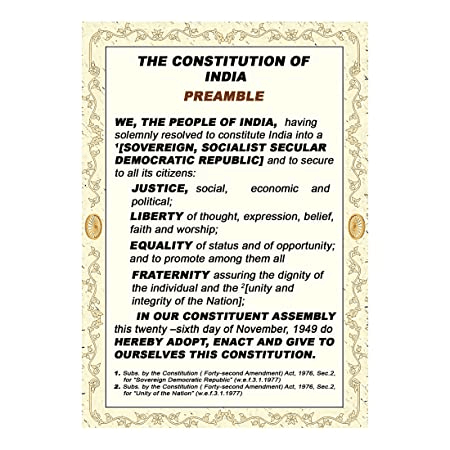
- The idea of a Preamble is borrowed from the American Constitution. The words ‘Socialist’, ‘Secular’, and ‘Integrity’ were added to the Preamble by the 42nd Amendment,1976.
- The first constitution to start with a preamble was the American Constitution. The Indian constitution also starts with one. The Preamble is basically the introduction or preface to the Constitution. It sums up the essence of the Constitution. N A Palkhivala, a constitutional expert, referred to the Preamble as the ‘Identity card of the Constitution’.
- The Preamble is based on Pandit Nehru’s Objective Resolution that he moved and was adopted by the Constituent Assembly. The Preamble has been amended in 1976 by the 42nd Amendment which added the words ‘socialist’, ‘secular’, and ‘integrity’ to it.
Purpose of the Preamble
- The preamble to the Constitution is a key to opening the minds of the makers and shows the general purpose for which they made several provisions in the Constitution. The preamble serves the following purposes:
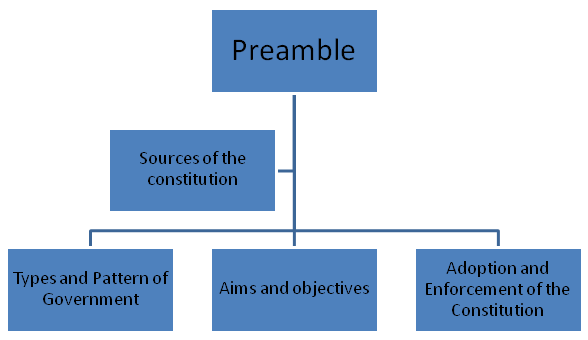
- It discloses the source of the Constitution.
- It lays down the date of the commencement of the Constitution.
- It set out the rights and freedoms which the people of India wished to secure for themselves.
- It declares the nature of the government.
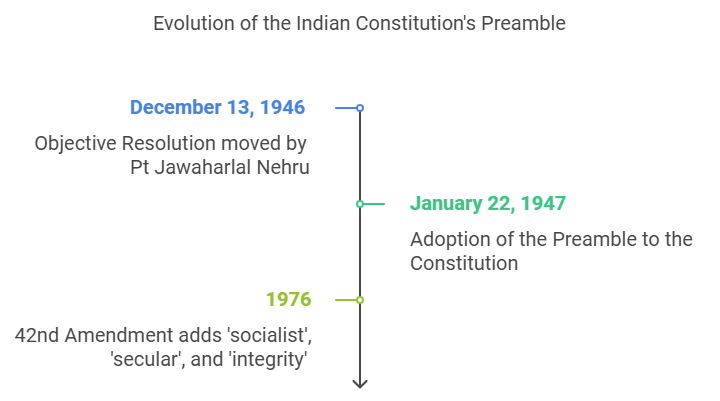
Text of the Preamble
We, the people of India, having solemnly resolved to constitute India into a Sovereign Socialist Secular Democratic Republic and to secure to all its citizens:
- Justice, social, economic, and political;
- Liberty, of thought, expression, belief, faith, and worship;
- Equality, of status and of opportunity; and to promote among them all
- Fraternity assuring the dignity of the individual and the unity and integrity of the Nation;
- In our constituent assembly, this twenty-sixth day of November 1949, do hereby adopt, enact and give to ourselves this constitution.
The Four Components of the Preamble
- The Preamble indicates that the source of authority of the Constitution lies with the people of India.
- It declares India to be a socialist, secular, secular, democratic, and republican nation.
- It states its objectives to secure justice, liberty, and equality for all citizens and promote fraternity to maintain the unity and integrity of the nation.
- It mentions the date (November 26, 1949) on which the constitution was adopted.
Keywords Used in the Preamble
- Sovereign:The Preamble proclaims that India is a Sovereign State. 'Sovereign' means that India has its own independent authority and it is not a dominion or dependent state of any other external power.
- Socialist:The word 'Socialist' was added to the Preamble by the 42nd Constitutional Amendment in 1976. Socialism means the achievement of socialist ends through democratic means. India has adopted 'Democratic Socialism'.
- Secular:The term secular in the Constitution of India means that all the religions in India get equal respect, protection, and support from the state.
- Democratic:The term Democratic indicates that the Constitution has established a form of government that gets its authority from the will of the people expressed in an election.
- Republic: No room for a hereditary ruler or monarch.Question for Introduction to the Constitution of India & PreambleTry yourself:The solemn resolution in the preamble of our constitution is made in the name ofView Solution
Landmark Cases
Berubari Union (1960): Preamble not part of Constitution but reflects its spirit.
Kesavananda Bharati (1973): Preamble is part of Constitution; established Basic Structure Doctrine.
Golaknath (1967): Fundamental Rights cannot be amended (later modified).
Minerva Mills (1980): Balanced Fundamental Rights and DPSP; reaffirmed Basic Structure.
Amenability of the Preamble
Q. Whether Preamble is part of the Constitution?
- The question of whether the Preamble can be amended or not was resolved by the Supreme Court in the famous Keshavananda Bharati Case (1973). In this case, the Supreme Court held that the Preamble is a part of the Constitution and can be amended, subject to the condition that it does not violate the ‘Basic Features of The Constitution’ as propounded by it.
Q. Whether the preamble can be amended?
- The Preamble has been amended only once in 1976, by the 42nd Constitutional Amendment, which added three new words ‘socialist, secular, and integrity’.
- It was held that these words are clarificatory in nature and did not make any substantial difference to the polity or the State in the sense that socialism, secularism, and national integrity were already implicit in the Preamble and the rest of the Constitution as originally framed.
Parts of the Constitution
The Parts of the Indian Constitution refer to the major divisions or chapters that organize the Constitution based on subject matter. Each Part deals with a specific aspect of governance, rights, duties, or structure of the Indian state. They help in systematically structuring the vast content of the Constitution.
The Indian Constitution was originally adopted with:
22 Parts
395 Articles
8 Schedules
Over the years, several amendments have expanded its structure. Notably, three additional Parts have been inserted:
Part IX-A – Municipalities
Part IX-B – Co-operative Societies
Part XIV-A – Tribunals
This brings the current total to:
25 Parts
448 Articles
12 Schedules
Schedules include supplementary details that do not fit directly into the main text, such as lists of states, forms of oaths, and distribution of powers.
When a new Article or Part is added, it is labeled alphabetically (like Article 21A) to avoid disturbing the original numbering system.
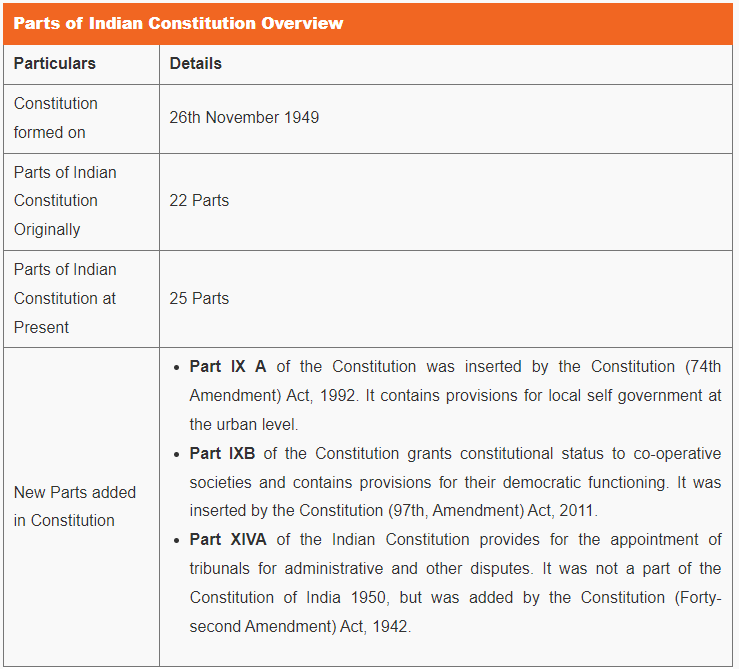
List of Parts of Indian Constitution
The Indian constitution is divided into 25 parts, learn more about the Parts of Indian Constitution listed below:
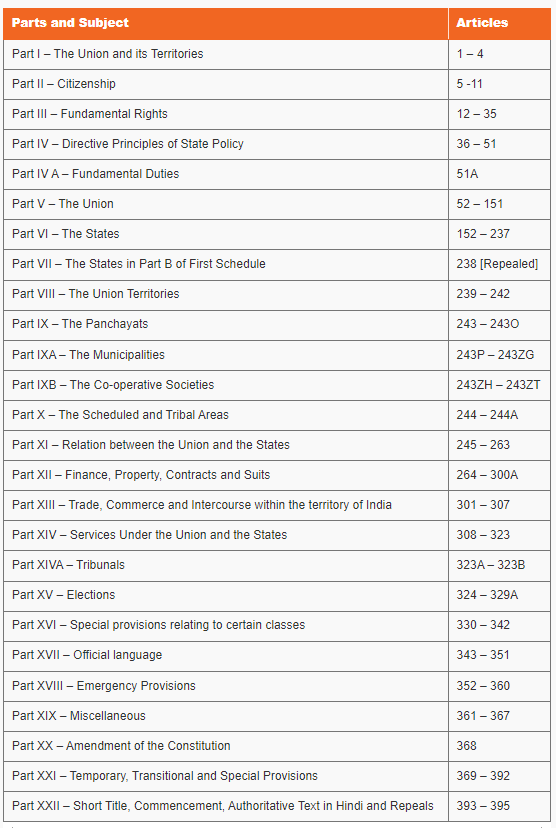
Schedules of the Constitution
The Schedules in the Indian Constitution are like special lists that give extra details about certain rules written in the Constitution. These details help explain things clearly, such as which powers belong to the Centre and the States, what oaths officials must take, and which languages are official in India.
When the Constitution was first made in 1950, it had 8 Schedules. Later, with changes made through the 73rd and 74th Amendments, Schedule 11 and Schedule 12 were added. So now, the Constitution has a total of 12 Schedules.
These Schedules make it easier to understand and follow the Constitution by organizing important information in one place.
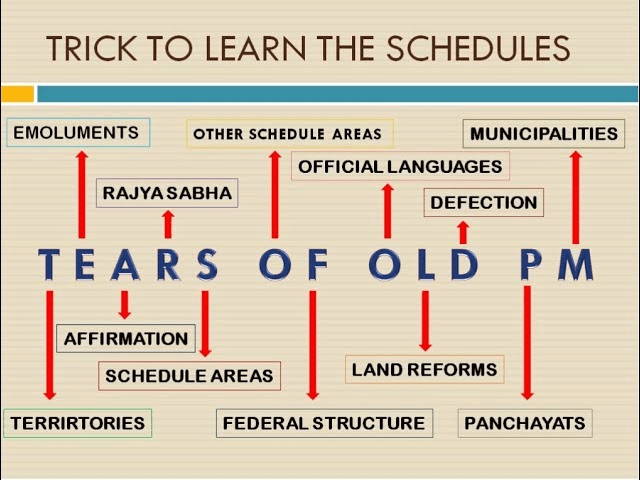
1. First Schedule: It contains the list of States and Union Territories in the country.
- The State
- The Union Territories
2. Second Schedule: The provisions in relation to allowances, privileges, emoluments of:
- President of India
- Governors of Indian States
- Speaker of Lok Sabha & Deputy Speaker of Lok Sabha
- Chairman of Rajya Sabha & Deputy Chairman of Rajya Sabha
- Speaker and Deputy Speaker of Legislative Assemblies of Indian States
- Chairman and Deputy Chairman of Legislative Councils of the Indian States
- Supreme Court Judges
- High Court Judges
- Comptroller & Auditor General of India (CAG)
3. Third Schedule: Forms of Oaths or Affirmations.
It contains the forms of oath and affirmation for:
- Union Ministers of India
- Parliament Election Candidates
- Members of Parliament (MPs)
- Supreme Court Judges
- Comptroller and Auditor General
- State Ministers
- State Legislature Elections’ Candidates
- State Legislature Members
- High Court Judges
4. Fourth Schedule: It contains the provisions in relation to the allocation of seats for States and Union Territories in the Rajya Sabha
5. Fifth Schedule: Provisions as to the administration and Control of Scheduled Areas and Scheduled Tribes.
- Part A: General
- Part B: Administration and Control of Scheduled Areas and Scheduled Tribes.
- Part C: Scheduled Areas
- Part D: Amendment of the Schedule
6. Sixth Schedule: Provisions as to the administration of Tribal Areas in Assam, Meghalaya, Tripura, and Mizoram.
7. Seventh Schedule: This schedule gives us the legislative lists:
- List I: Union List
- List II: State List
- List III: Concurrent List
8. Eighth Schedule: It deals with the 22 official languages recognized by the Constitution of India:
- Assamese
- Bengali
- Bodo
- Dogri (Dongri)
- Gujarati
- Hindi
- Kannada
- Kashmiri
- Konkani
- Mathili (Maithili)
- Malayalam
- Manipuri
- Marathi
- Nepali
- Oriya
- Punjabi
- Sanskrit
- Santhali
- Sindhi
- Tamil
- Telugu
- Urdu
9. Ninth Schedule:
It deals with the state acts and regulations of that deal with land reforms and abolition of the zamindari system. It also deals with the acts and regulations of the Parliament dealing with other matters.
Note : 1st Amendment Act 1951 added the Ninth Schedule to protect the laws included in it from judicial scrutiny on the ground of violation of fundamental rights. However, in 2007, the Supreme Court ruled that the laws included in this schedule after April 24, 1973, are now open to judicial review.
10. Tenth Schedule:
It contains provisions relating to disqualification of the members of Parliament and State Legislatures on the ground of defection.
Note: This schedule was added by the 52nd Amendment Act of 1985, also known as Anti-defection Law
11. Eleventh Schedule: It contains the provisions that specify the powers, authority and responsibilities of Panchayats. It has 29 matters.
Note: This schedule was added by the 73rd Amendment Act of 1992
12. Twelfth Schedule: It deals with the provisions that specify the powers, authority and responsibilities of Municipalities. It has 18 matters.
Article 243W – (Powers, authority, and responsibilities of Municipalities, etc. – 74th Amendment, 1992)
Note: This schedule was added by the 74th Amendment Act of 1992
The Union and its Territory
When the Constitution came into effect in 1950, India was divided into four types of states: Part A States, Part B States, Part C States, Part D Territories. Over time, this classification was abolished by the 7th Constitutional Amendment Act, 1956, and India was reorganized into just States and Union Territories.
Article 1 of the Constitution states:
India, that is Bharat, shall be a Union of States.
This highlights that:
India is a single unified nation, not formed by any agreement among states.
States do not have the right to secede from the Union.
The federal structure of India is indestructible, meaning the Union remains intact even if state boundaries change.
Special Status of Jammu & Kashmir
- Jammu and Kashmir was given special status under Article 370, which became operative in 1952.
- The separate Constitution of the State was drafted by the Constituent Assembly of Jammu and Kashmir and became effective on January 26, 1957.
- This special status granted the state much greater autonomy than any other state, with the central government’s jurisdiction being more limited. Laws passed by the Indian Parliament did not automatically apply to Jammu and Kashmir unless they were approved by the state.
Jammu and Kashmir was a state of India from 1954 to 2019. However, in 2019, the Government of India repealed the special status accorded to Jammu and Kashmir under Article 370.
Following this, the Parliament of India passed the Jammu and Kashmir Reorganisation Act, which dissolved the state and reorganized it into two union territories: Jammu and Kashmir in the west and Ladakh in the east, effective from October 31, 2019. At the time of its dissolution, Jammu and Kashmir was the only state in India with a Muslim-majority population.
States and Union - The Timeline
In 1956, there were 14 states and 6 union territories in India. The first state to be created on a linguistic basis was Andhra Pradesh in 1953, not 1956.
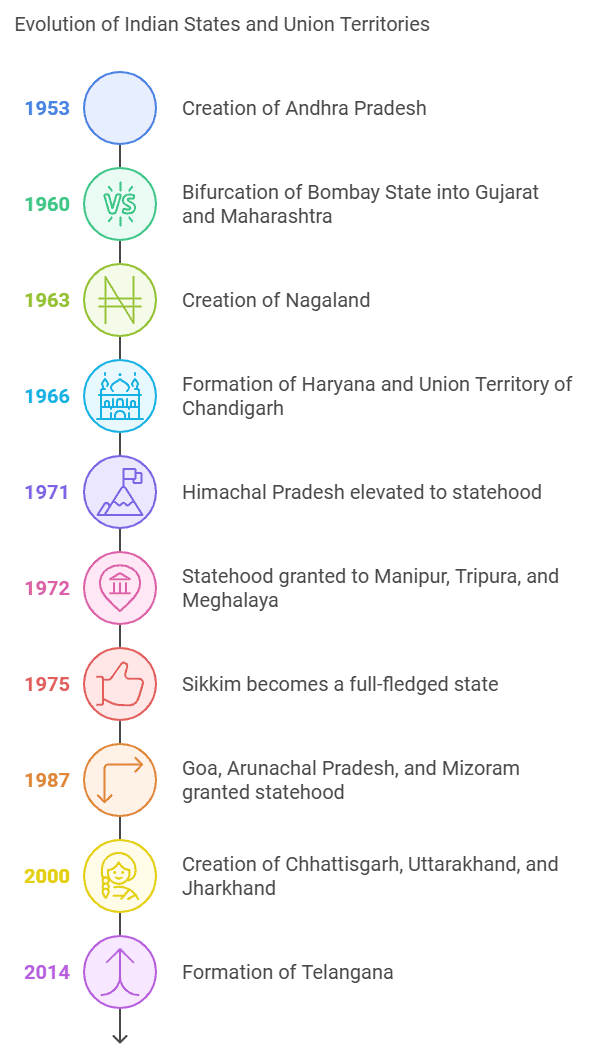
- 1960: Bombay State was bifurcated into Gujarat and Maharashtra.
- 1963: Nagaland was created as a separate state.
- 1966: Haryana was carved out of Punjab, and Chandigarh became a Union Territory. The reorganization of Punjab was based on the Shah Commission's recommendations.
- 1971: The Union Territory of Himachal Pradesh was elevated to statehood.
- 1972: Manipur, Tripura, and Meghalaya were granted statehood.
- 1974: Sikkim became an associate state of the Indian Union. By the 36th Constitutional Amendment Act of 1975, Sikkim became a full-fledged state of the Indian Union.
- 1987: Goa was granted statehood; Arunachal Pradesh and Mizoram also became states.
- 2000: Chhattisgarh, Uttarakhand (initially named Uttaranchal), and Jharkhand were created as new states.
- 2014: Telangana was created, becoming the 29th state of India.
Addition of States to India
The power to create a new state rests solely with the Parliament of India. The Constitution does not provide for the secession of any part of the country.
- Manipur: Became a Union Territory in 1949 and a full state in 1972.
- Tripura: Became a Union Territory in 1949 and a full state in 1972.
- Jammu and Kashmir: Joined India in 1947 and was a state until it was reorganized into two Union Territories in 2019.
- Sikkim: On May 16, 1975, Sikkim officially became a state of the Indian Union, with Lhendup Dorji as its Chief Minister. In 1975, its subjects voted by plebiscite to become a state of India.
Citizenship of India
Citizenship means full membership of an individual in a nation, granting both rights and duties. Citizens enjoy all Fundamental Rights (like Right to Vote, Right against Discrimination), while aliens (non-citizens) do not get certain rights.
Before 1950, there was no concept of Indian citizenship. People under British India were British subjects, while those in princely states were British-protected persons.
Key Provisions (Articles 5–11)
Articles 5 to 11 in the Constitution deal with the status of individuals as Indian citizens at the time of the commencement of the Constitution (January 26, 1950).
They define who is a citizen, not how citizenship is acquired or lost later.
A person who voluntarily gives up Indian citizenship also causes their child to lose it.
Features of Indian Citizenship
Single Citizenship: India follows a single citizenship model, meaning every Indian is a citizen of India only, regardless of the state or union territory they belong to.
No Dual Citizenship: The Constitution does not allow holding Indian citizenship along with that of another country.
Equal Rights: All Indian citizens enjoy the same rights and responsibilities across the country, with some exceptions for special regions like Jammu & Kashmir and tribal areas.
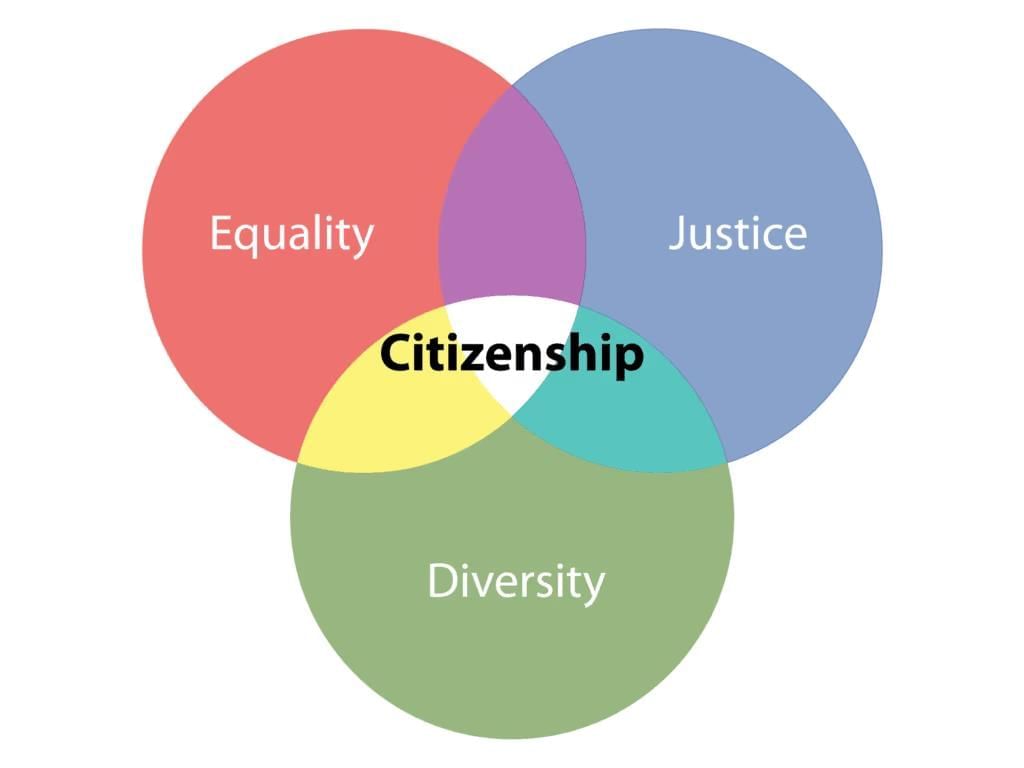
Acquisition of Citizenship
- Our constitution provides for single citizenship despite being a federal structure, unlike the USA. All citizens are entitled to the same rights all over the country without any discrimination, subject to some special protections in case of Jammu & Kashmir, tribal areas, etc.
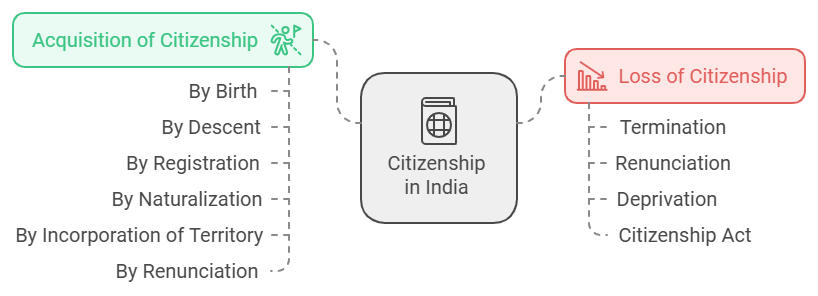
- Citizenship can be acquired by:
(i) By Birth
(ii) By Descent
(iii) By Registration
(iv) By Naturalization
(v) By Incorporation of Territory
(vi) By Renunciation - The constitution does not provide for the mode of acquisition and termination of citizenship. The Parliament can, by law, could regulate the right of citizenship.
Loss of Citizenship
Termination: Automatically lost if an Indian citizen voluntarily acquires citizenship of another country.
Renunciation: Voluntarily gives up Indian citizenship.
Deprivation: Citizenship can be cancelled by the Government for fraud, disloyalty, etc.
The Citizenship Act, 1955
This Act provides for acquisition and loss of citizenship post-1950. It has been amended multiple times to deal with issues of illegal immigration, PIOs/NRIs, and national security.
Key Amendments:
1986 Amendment: Citizenship by birth made more restrictive due to illegal immigration (especially from Bangladesh).
2003 Amendment: Introduced the concept of Overseas Citizenship of India (OCI).
2015 Amendment: Merged PIO and OCI categories into a single OCI cardholder category.
2019 Amendment (CAA): Eased the process of granting citizenship to certain persecuted religious minorities (Hindus, Sikhs, Jains, Buddhists, Parsis, Christians) from Pakistan, Afghanistan, and Bangladesh, who entered India before December 31, 2014.
Overseas Citizenship of India (OCI)
OCI status is given to foreign citizens of Indian origin (except those from Pakistan and Bangladesh).
Benefits include:
Multiple-entry, lifelong visa to India.
Exemption from registration with FRRO.
Permission to live and work in India.
Limitations
OCI holders cannot vote, hold public offices, or work in government jobs.
OCI is not equal to full citizenship; it is more of a long-term visa/residency status.
|
65 videos|177 docs|38 tests
|
FAQs on Introduction to the Constitution of India & Preamble - Legal Reasoning for CLAT
| 1. What is the Constitution of India and why is it important? |  |
| 2. What is the significance of the Preamble in the Indian Constitution? |  |
| 3. How many parts does the Constitution of India have, and what do they signify? |  |
| 4. What are the Schedules of the Constitution, and how many are there? |  |
| 5. How does the Indian Constitution protect the rights of citizens? |  |






















